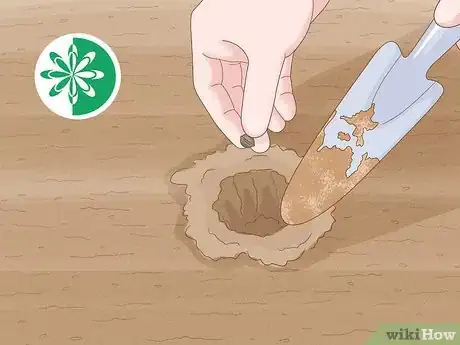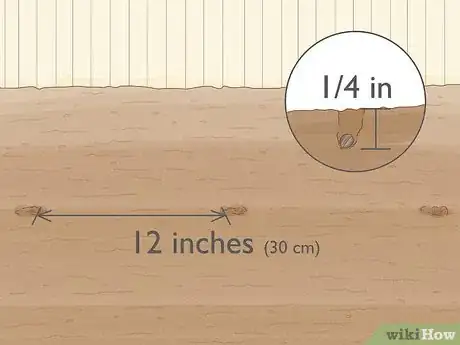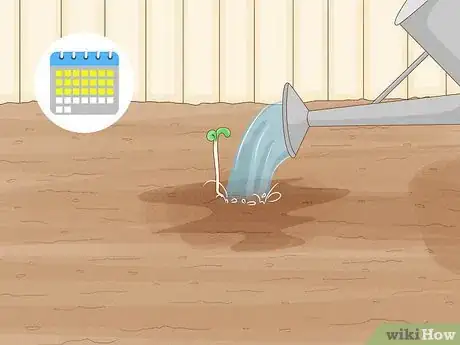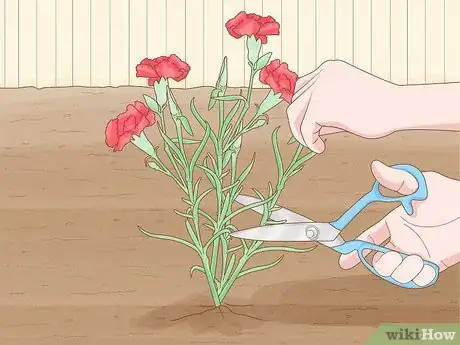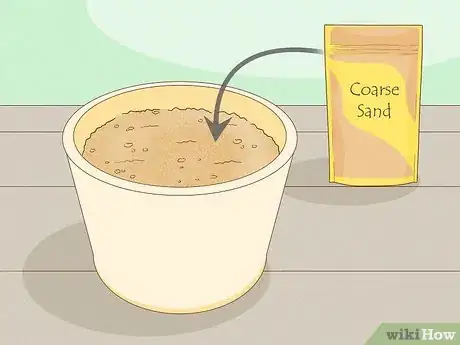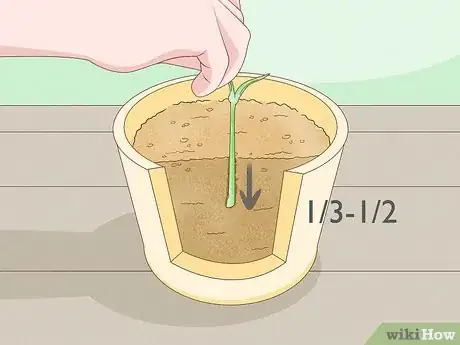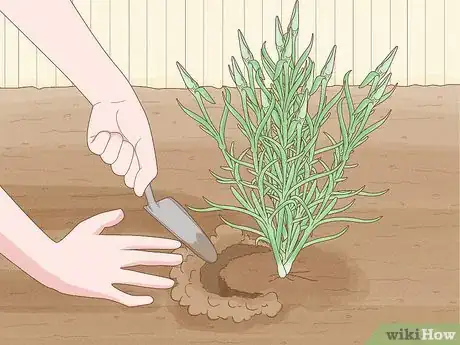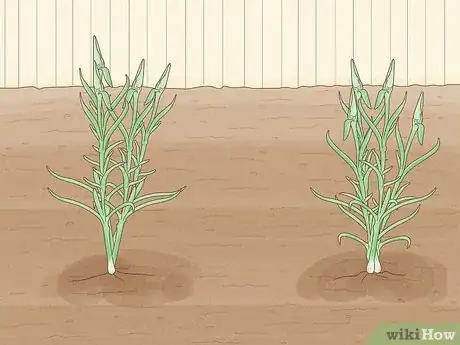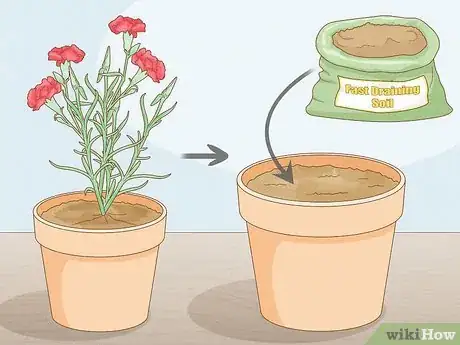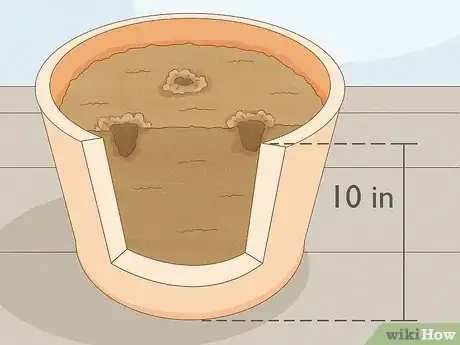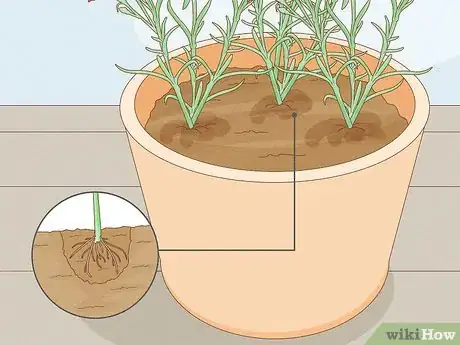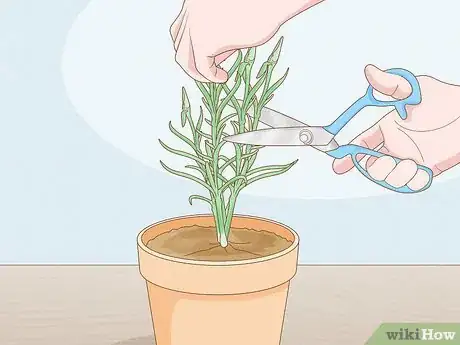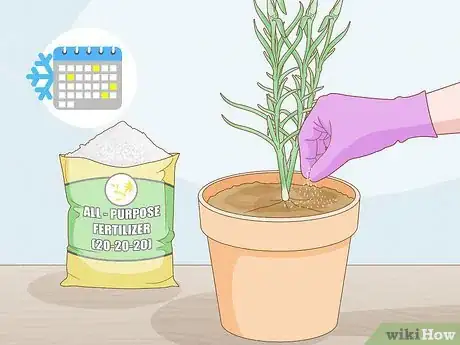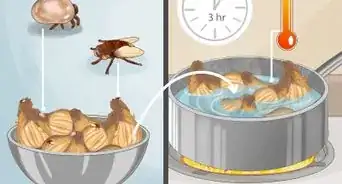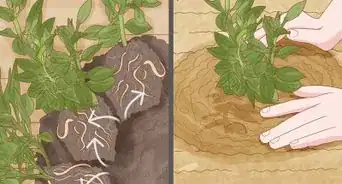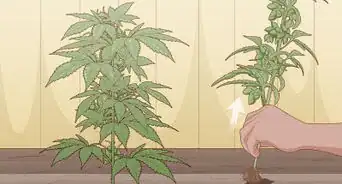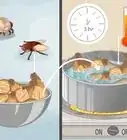X
wikiHow is a “wiki,” similar to Wikipedia, which means that many of our articles are co-written by multiple authors. To create this article, 14 people, some anonymous, worked to edit and improve it over time.
This article has been viewed 96,876 times.
Learn more...
Carnations are beautiful flowers that are prized for their large, showy blooms. These flowers will last up to the frost with minimal care. Read on to learn how to add them to your garden.
Steps
Method 1
Method 1 of 4:
From Seeds
-
1Sow the seeds in early Spring season. For best results, be sure that the soil is moist but not too wet.[1]
-
2Space seeds 12 inches (30 cm) apart. Cover with 1/4 inch (.6 cm) soil. Pat firmly.[2]Advertisement
-
3Mist the seeds occasionally to promote moisture. Seeds should germinate in 2-3 weeks.[3]
Advertisement
Method 2
Method 2 of 4:
From Cuttings
-
1Cut stem tips from a healthy carnation plant. Ideally, the tips should have 2-3 leaf nodes. Remove the stem immediately below a leaf node. Cut off the leaves from the bottom half of the stem tips.[4]
-
2Fill a planting container with coarse sand. Moisten it thoroughly. Repeat the same for each stem.[5]
-
3Push the stem tip about 1/3-1/2 of the way into the sand. Cut off any leaves that touch the sand.[6]
-
4Place the container in a spot where it will receive even, indirect sunlight. Use a spray bottle every day to keep the sand moist.
-
5Use a trowel to loosen the cutting from the sand one month after it grows roots. Move it to a container with potting soil or a sunny garden spot.
Advertisement
Method 3
Method 3 of 4:
By Division
Method 4
Method 4 of 4:
In Pots
-
1Transplant the carnations into large pots that are able to hold several plants. These pots should have drainage holes. Fill them up with fast-draining soil.[10]
-
2Dig shallows holes in the pot to accommodate the roots. Usually, you can plant 3 to 5 carnations in a ten-inch pot.[11]
-
3Pack the soil around the stems so that the root crown of the carnations remain slightly above the soil.[12]
-
4Do not prune the carnations until they have at least 10 pairs of leaves. Then, remove the top six pairs, forcing the carnations to branch out.[13]
-
5When watering, avoid getting moisture on the foliage. This can lead to potential fungi problems.
-
6Fertilize the carnations once a week with 20-20-20 all-purpose plant food at half strength. Stop fertilizing the carnations during winter.[14]
Advertisement
Community Q&A
-
QuestionI've had healthy plants for over a year, so why don't I see any flowers?
 Community AnswerIt's my understanding that flowers such as roses and carnations, when grown from cuttings, spend the first year or so developing root systems capable of sustaining the existing greenery while also developing new foliage. They sacrifice blooming during this first crucial stage. But, I have heard that during years two, three, and beyond, new blooms will appear regularly in ever increasing numbers (i.e. the root system is then capable of supplying the energy needed for reproduction).
Community AnswerIt's my understanding that flowers such as roses and carnations, when grown from cuttings, spend the first year or so developing root systems capable of sustaining the existing greenery while also developing new foliage. They sacrifice blooming during this first crucial stage. But, I have heard that during years two, three, and beyond, new blooms will appear regularly in ever increasing numbers (i.e. the root system is then capable of supplying the energy needed for reproduction). -
QuestionWhen can I plant my carnation seedlings outside?
 ThisIsMyKingdomComeCommunity AnswerYou can plant the seedlings once they reach 4 to 5 inches in height and your area is frost-free. Check weather reports to determine there is no risk of frost.
ThisIsMyKingdomComeCommunity AnswerYou can plant the seedlings once they reach 4 to 5 inches in height and your area is frost-free. Check weather reports to determine there is no risk of frost. -
QuestionHow soon can I move a carnation plant after it has been planted?
 ThisIsMyKingdomComeCommunity AnswerYou can transplant your carnations once they have two or three leaves, so about two to four weeks.
ThisIsMyKingdomComeCommunity AnswerYou can transplant your carnations once they have two or three leaves, so about two to four weeks.
Advertisement
Warnings
- Do not mulch your carnation plants.⧼thumbs_response⧽
- Always be sure to water the plant and take care of it for lovely beautiful flowers.⧼thumbs_response⧽
- Remember to take off the wild plants grown in between the plants.⧼thumbs_response⧽
Advertisement
References
- ↑ https://www.countryliving.com/gardening/a22108823/carnations/
- ↑ https://www.countryliving.com/gardening/a22108823/carnations/
- ↑ https://www.theflowerexpert.com/content/growingflowers/growingflowers/growing-carnations
- ↑ https://www.gardeningchannel.com/how-to-grow-carnations/
- ↑ https://content.ces.ncsu.edu/extension-gardener-handbook/13-propagation
- ↑ https://www.countryliving.com/gardening/a22108823/carnations/
- ↑ https://content.ces.ncsu.edu/extension-gardener-handbook/13-propagation
- ↑ https://www.theflowerexpert.com/content/growingflowers/growingflowers/growing-carnations
- ↑ https://www.theflowerexpert.com/content/growingflowers/growingflowers/growing-carnations
About This Article
Advertisement
